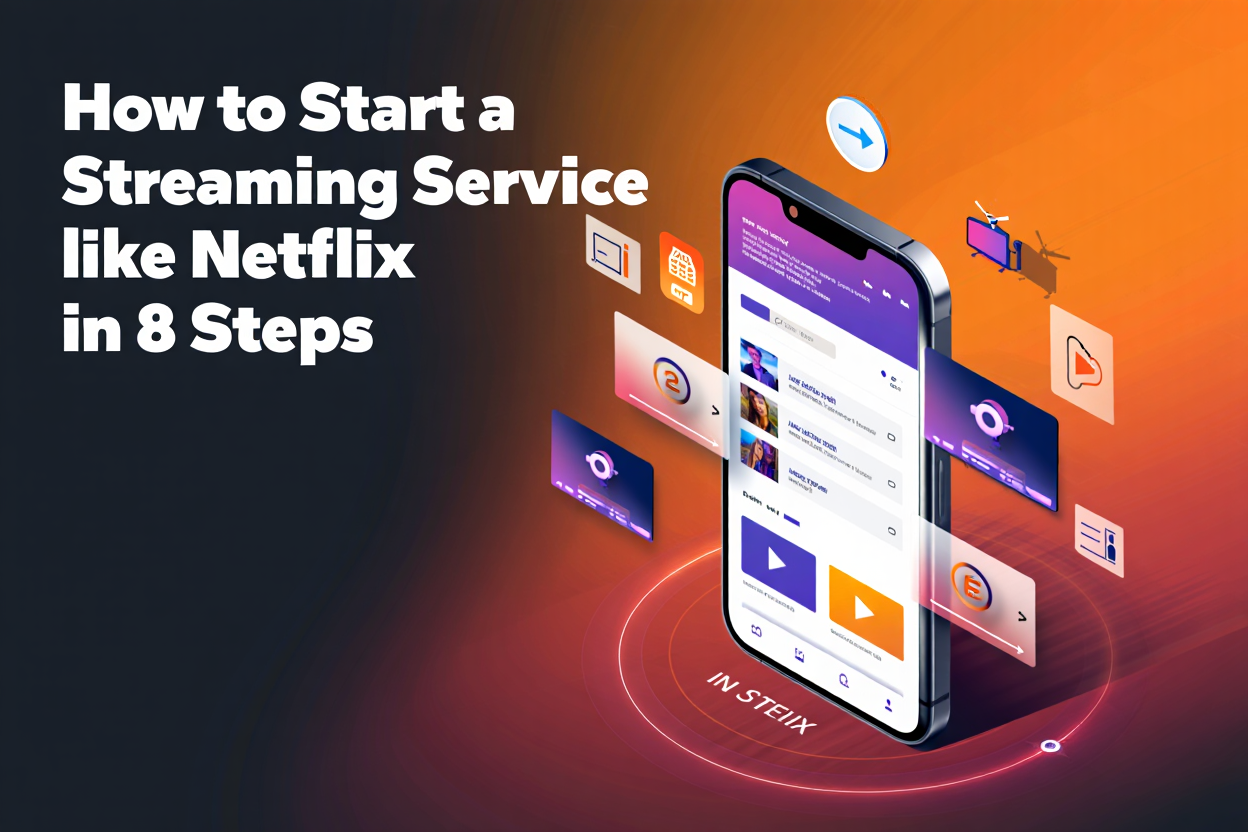By 2025, the entertainment sector will be dominated by streaming services like Netflix, Hulu, and Disney+. By 2028, the global OTT (Over-The-Top) market is expected to reach $450 billion, making it one of the most profitable industries for business owners. The time is right if you’ve ever considered starting your streaming service. However, where do you start?
This guide will walk you through 8 essential steps to create a streaming service like Netflix, covering everything from idea validation to launching and scaling your platform.
Step 1: Identify Your Niche & Target Audience
Before you jump into development, define your niche. Competing head-to-head with Netflix may be unrealistic, but you can carve out a strong market position by targeting specific genres or audiences.
- Examples of niches: documentaries, regional content, kids’ shows, fitness videos, live sports, or educational content.
- Why this matters: A niche strategy helps you build a loyal subscriber base rather than getting lost in the crowd.
Step 2: Define Your Streaming Service Business Model
Your revenue model will determine how your platform sustains itself. Popular options include:
- SVOD (Subscription Video on Demand): Monthly/annual fees (like Netflix).
- AVOD (Advertising Video on Demand): Free content supported by ads (like YouTube).
- TVOD (Transactional Video on Demand): Pay-per-view model (like iTunes).
- Hybrid Models: Combining ads with subscriptions for flexible monetization.
Step 3: Secure Content Licensing or Create Originals
Content is king. Without a strong library, your platform won’t attract users. You have two options:
- License existing content from production houses, distributors, or independent creators.
- Create original content to differentiate your brand and drive engagement.
- Pro Tip: Start with licensed content, then gradually invest in original productions once your subscriber base grows.
Step 4: Plan Essential Features for Your Streaming Platform
A successful streaming service isn’t just about content—it’s also about the user experience. Key features include:
- User-friendly onboarding & profile creation
- Advanced search & content categorization
- Watchlist & personalized recommendations (AI-driven)
- Multiple device support (smart TVs, smartphones, tablets, desktops)
- HD/4K streaming with adaptive bitrate
- Offline downloads
- Parental controls
- Secure payment gateways
Step 5: Choose the Right Technology Stack
Behind every smooth streaming experience is a powerful tech backbone. You’ll need:
- Frontend: React, Angular, or Vue.js for web; Swift/Java/Kotlin for mobile apps.
- Backend: Node.js, Django, or Ruby on Rails.
- Cloud Hosting & Storage: AWS, Google Cloud, or Microsoft Azure.
- Video Encoding & Streaming: FFmpeg, Wowza, or AWS Media Services.
- CDN (Content Delivery Network): Cloudflare or Akamai for fast content delivery.
- Database: MySQL, MongoDB, or PostgreSQL.
Step 6: Ensure Content Security & Compliance
Piracy is a major threat to streaming businesses. To protect your content:
- Use DRM (Digital Rights Management) solutions.
- Enable AES encryption for video files.
- Add watermarking to identify leaks.
- Comply with GDPR and copyright regulations in your target regions.
Step 7: Build & Test Your Streaming Platform
Now comes the development phase. You can either:
- Build in-house (requires a strong tech team and high costs).
- Partner with a mobile app development company specializing in OTT solutions.
Testing is equally important—ensure your platform works seamlessly across devices, handles high traffic, and delivers smooth playback even in low bandwidth.
Step 8: Launch & Market Your Streaming Service
Once your app is ready, focus on growth strategies:
- Pre-launch buzz: Use teaser campaigns and influencer marketing.
- Digital marketing: SEO, paid ads, and content marketing.
- Referral programs: Reward users for inviting friends.
- Partnerships: Collaborate with telecom providers, smart TV companies, or creators.
- Retention strategies: Push notifications, personalized recommendations, and loyalty discounts.
Final Thoughts
Though difficult, launching a streaming service similar to Netflix in 2025 is feasible with the correct plan. You may take a piece of the rapidly expanding OTT industry by figuring out your niche, guarding your content, creating an intuitive platform, and utilizing cutting-edge technologies.


